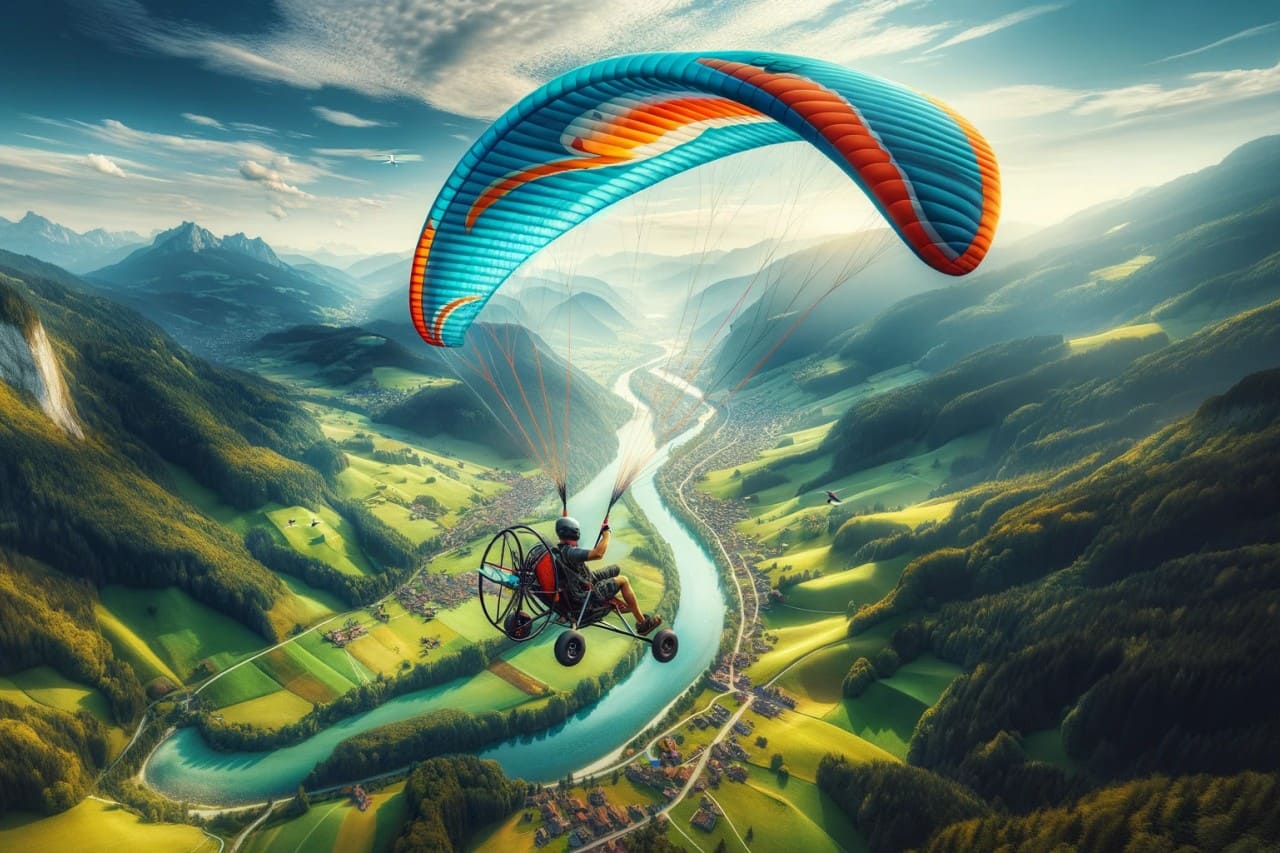Flight is a word that has long captivated and charmed humanity. Throughout history, people have gazed skyward, seeking destiny, a better life, freedom, and lightness. To achieve this age-old dream of soaring high, countless minds have worked tirelessly to create devices that make flight possible. Among these inventions is the paraglider, a gateway to the living sensation of flight, where the wind whistles in your ears and emotions run high.
Understanding Paragliders
What exactly is a paraglider? This ultralight aircraft, reminiscent of an unfurled parachute, offers ease of control and simplicity in use. A paraglider weighs between 2 and 6 kg, and its flight preparation takes merely 5 minutes, making it accessible to virtually everyone, health and fears aside. If you're neither health-constrained nor acrophobic, prepare to conquer the aerial summits amidst cloud peaks and wind currents. The paraglider is your ally in this journey.
More Than a Parachute
Similar to parachutes, paragliders have a unique advantage – they allow you to traverse many kilometres freely without any aids. Mastery of utilising air currents, especially those stronger at higher altitudes, is key to enjoying flight. Add a paramotor to your paraglider, and you become the king of the skies, with the ability to launch from almost anywhere – meadows, fields, or even rooftops.
Records and Interesting Facts about Paragliding
Paraglider pilots, often called "Children of Icarus," are akin to the legendary Icarus, who soared toward the sun. Today's pilots, of course, do not seek to reach the sun but have set remarkable records in paragliding:
- Longest flight: 461 kilometres
- Highest altitude from takeoff point: 4,526 meters
- Unofficial record for highest altitude above sea level: 7 kilometres
Main Characteristics of a Paraglider
A paraglider's key attributes include:
- Minimum speed: 20-25 km/h
- Maximum speed: 50-60 km/h (60-70 km/h for sports models)
- Descent rate: 1 m/s
- Aerodynamic quality: 7-11 meters per second (varies by model)
Flight Qualities of a Paraglider
Paragliders should not be confused with parachutes. Designed from light, free materials, they are made to take off from the ground as the wind fills their fabric pockets. However, remember that takeoff requires wind from behind and sloping terrain. Once airborne, altitude maintenance becomes less critical.
Pros and Cons
While paragliding allows easy takeoff, it also has its limitations:
- Pilots are bound to the location of the slope for takeoff.
- Beginners may not reach very high altitudes.
- Paragliders, like parachutes, depend on wind conditions.
Learning to Fly
While paragliding is accessible, remember it's also a risky sport. Start your training with a professionally trained instructor to learn the basics and advanced techniques of paragliding safely and enjoyably.

